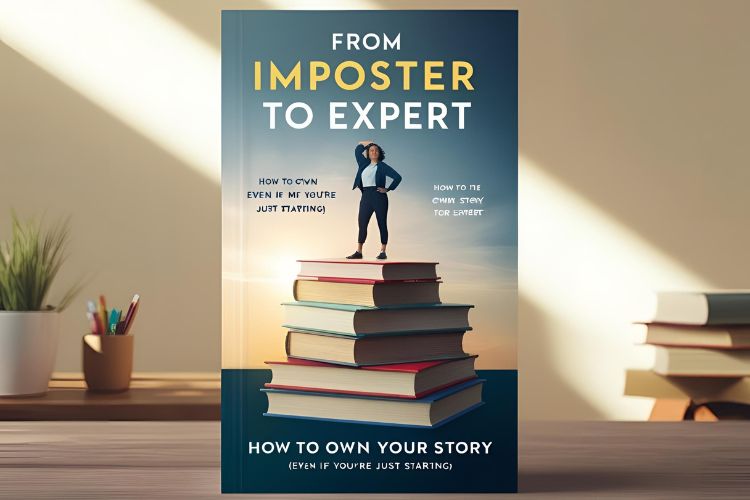Burnout doesn’t just drain your energy — it shakes your identity.
Setbacks don’t just stall momentum — they make you question your judgment.
And when you’ve been through disappointment, detours, or failure, the hardest part often isn’t starting over — It’s trusting yourself to try again.
That part rarely gets talked about.
Not the to-do lists, not the strategy. But the emotional re-entry.
The quiet fear that says,
“What if I mess it up again?”
“What if I can’t trust my own instincts?”
This post is for that version of you.
You don’t need to come back with a bang. You just need a way to come back without shame — and with self-trust slowly rebuilding itself from the inside out.
Let’s walk through how.
Why Burnout or Setbacks Hit Self-Trust So Hard
It’s not just the lost time or missed goals that sting after burnout or a business setback. It’s the self-doubt that sneaks in afterward.
You start wondering:
- “How did I let it get that bad?”
- “Why didn’t I see it coming?”
- “Can I even trust myself to handle things next time?”
Burnout doesn’t just leave you tired. It leaves you second-guessing your own pace, priorities, and decisions.
What’s really happening?
You’re grieving — not just what didn’t work, but the version of you that you thought would handle it better. And that grief can make your inner voice go quiet… or harsh.
But here’s the truth: You didn’t fail because you’re weak. You burned out or stumbled because you’re human — and maybe because your systems didn’t support your growth.
And that is fixable.
Rebuilding starts with understanding the emotional weight you’re carrying — not judging it.
Next, we start rewriting the inner script.
The Inner Narrative That Needs Rewriting
After a burnout or setback, it’s easy to slip into quiet self-blame.
Not the loud, dramatic kind — the subtle voice that says:
- “I should’ve known better.”
- “I can’t be trusted to follow through.”
- “I’m behind everyone else now.”
These aren’t facts.
They’re stories your survival brain tells you to make sense of what went wrong.
But stories can be rewritten.
Try this gentle reframe:
Instead of → “I messed everything up.”
Try → “I hit a limit I didn’t know I had — and now I know better.”
Instead of → “I should’ve seen this coming.”
Try → “I was doing my best with what I knew at the time.”
Instead of → “I don’t trust myself anymore.”
Try → “I’m learning how to move forward in a new way — with more care.”
Self-trust doesn’t return by force. It comes back when you stop punishing the past and start practicing compassionate honesty in the present.
Start With One Reliable Habit (Not a Reinvention Plan)
After burnout, it’s tempting to swing into overhaul mode: new planner, new system, new goals, new identity.
But you don’t need a complete reinvention.
You need one small promise to yourself — and the quiet pride of keeping it.
Why this works?
- Tiny habits rebuild evidence that you can be trusted again
- Consistency (not intensity) heals your relationship with follow-through
- A single win resets your internal compass faster than a 90-day plan ever could
Try one of these
- 10 minutes of journaling every morning
- A short walk before checking your phone
- Sending one email per week to your audience
- Turning off work notifications after 6 PM
- Saying “no” to one thing per week without guilt
Every time you follow through on something small, you tell your nervous system: “Hey, I’ve got you.”
And that’s how self-trust starts coming home.
Separate Past Mistakes From Your Present Capacity
One of the hardest parts of bouncing back is not letting the past define what you’re capable of now.
Burnout can leave a mental scar — a voice that says:
- “You’ve failed before, so don’t try again.”
- “You can’t trust your ambition — it led you to exhaustion.”
But that’s your fear talking, not your current capacity.
Here’s the truth
- What happened before doesn’t cancel your ability to grow now
- You are wiser, not weaker — you’ve learned what not to repeat
- Your past burnout was feedback, not a verdict
Turn regret into tools
Ask yourself:
- What warning signs did I miss last time?
- What boundaries did I ignore?
- What support do I need this time around?
Then use the answers to build better guardrails — not build walls around your progress.
You’re not starting from scratch.
You’re starting from experience.
Surround Yourself With Proof (Not Pressure)
When self-trust feels shaky, don’t push harder — ground deeper.
The fastest way to reconnect with your strength isn’t another goal or system.
It’s evidence — of who you are, what you’ve overcome, and how far you’ve already come.
Here’s how to build your “proof bank”
- Collect kind words — Testimonials, emails, messages from past clients or friends
- Screenshot your wins — Big or small, save them in a folder
- Keep a “Did It” list — Not what you have to do, but what you already did
- Ask for reflection — Talk to someone who’s seen you grow and ask: “What do you think I’m good at that I forget?”
Self-trust grows in quiet moments of remembering — not comparing. You don’t need more pressure. You need proof that you’re already stronger than your doubts.
Final Thoughts: You’re Allowed to Begin Again (On Your Terms)
You don’t need to come back swinging.
You don’t need a rebrand, a 5-figure launch, or a flawless plan.
You just need a quiet decision to start again — with care.
Because rebuilding self-trust isn’t about proving anything.
It’s about returning to yourself, at a pace that respects your energy and your truth.
You’re not behind.
You’re not broken.
You’re healing. And healing counts as progress.
Every step you take with intention, no matter how small, strengthens the part of you that says: “I’ve got this. And I’ve got me.”
You’re allowed to begin again.
This time, in a way that honors who you’ve become.


